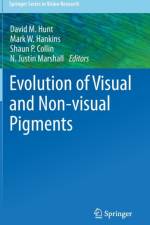1 737
Our understanding of human color vision has advanced tremendously in recent years, helped along by many new discoveries, ideas, and achievements. It is therefore timely that these new developments are brought together in a book, assembled specifically to include new research and insight from the leaders in the field. Although intentionally not exhaustive, many aspects of color vision are discussed in this Springer Series in Vision Research book including: the genetics of the photopigments; the anatomy and physiology of photoreceptors, retinal and cortical pathways; color perception; the effects of disorders; theories on neuronal processes and the evolution of human color vision. Several of the chapters describe new, state-of-the-art methods within genetics, morphology, imaging techniques, electrophysiology, psychophysics, and computational neuroscience. The book gives a comprehensive overview of the different disciplines in human color vision in a way that makes it accessible to specialists and non-specialist scientists alike. About the Series: The Springer Series in Vision Research is a comprehensive update and overview of cutting edge vision research, exploring, in depth, current breakthroughs at a conceptual level. It details the whole visual system, from molecular processes to anatomy, physiology and behavior and covers both invertebrate and vertebrate organisms from terrestrial and aquatic habitats. Each book in the Series is aimed at all individuals with interests in vision including advanced graduate students, post-doctoral researchers, established vision scientists and clinical investigators. The series editors are N. Justin Marshall, Queensland Brain Institute, The University of Queensland, Australia and Shaun P. Collin, Neuroecology Group within the School of Animal Biology and the Oceans Institute at the University of Western Australia.





